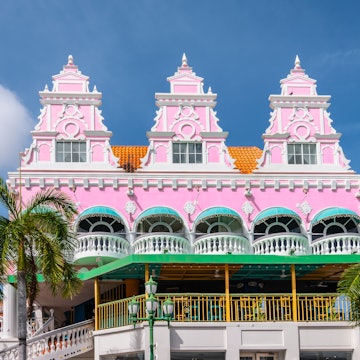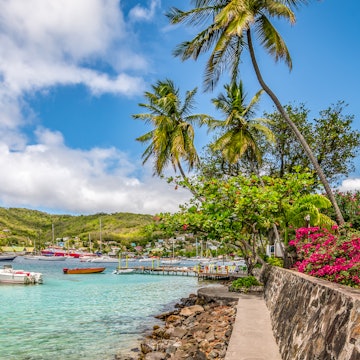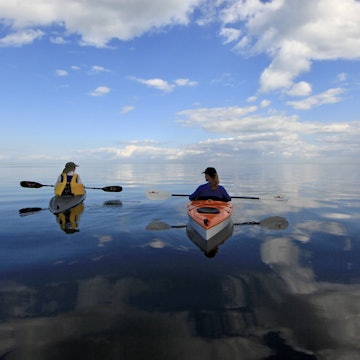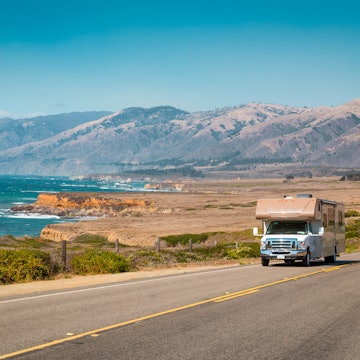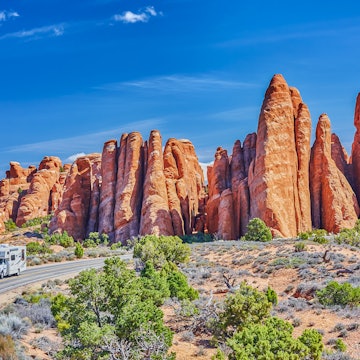

Cleaning sargassum on Playa del Carmen, Mexico. daniromphoto/Shutterstock
Quick: picture your fantasy Caribbean getaway. Did you happen to see those massive brown blobs of seaweed floating up on that imaginary powdery beach?
Probably not. No one expects a storm of sargassum (that’s the aforementioned seaweed) to crash their vacation plans.
But some seasons, the Caribbean experiences above-average amounts of this macroalgae, with large floating mats of it affecting coastlines and washing ashore on the very sun-soaked islands you're dreaming of vacationing on.
What’s a traveler to do during some potentially prickly times? Sargassum has been a regular feature of Florida beaches for quite some time. Growing up in Miami, I used it to add thoughtful design touches to my sandcastles.
As a sargassum warrior for almost 40 years, I’ve never let it ruin my summer fun, and I’m happy to report that it doesn’t have to ruin yours either.
Here’s a primer on all things sargassum and how you can navigate this nuisance to still have that dream vacation.
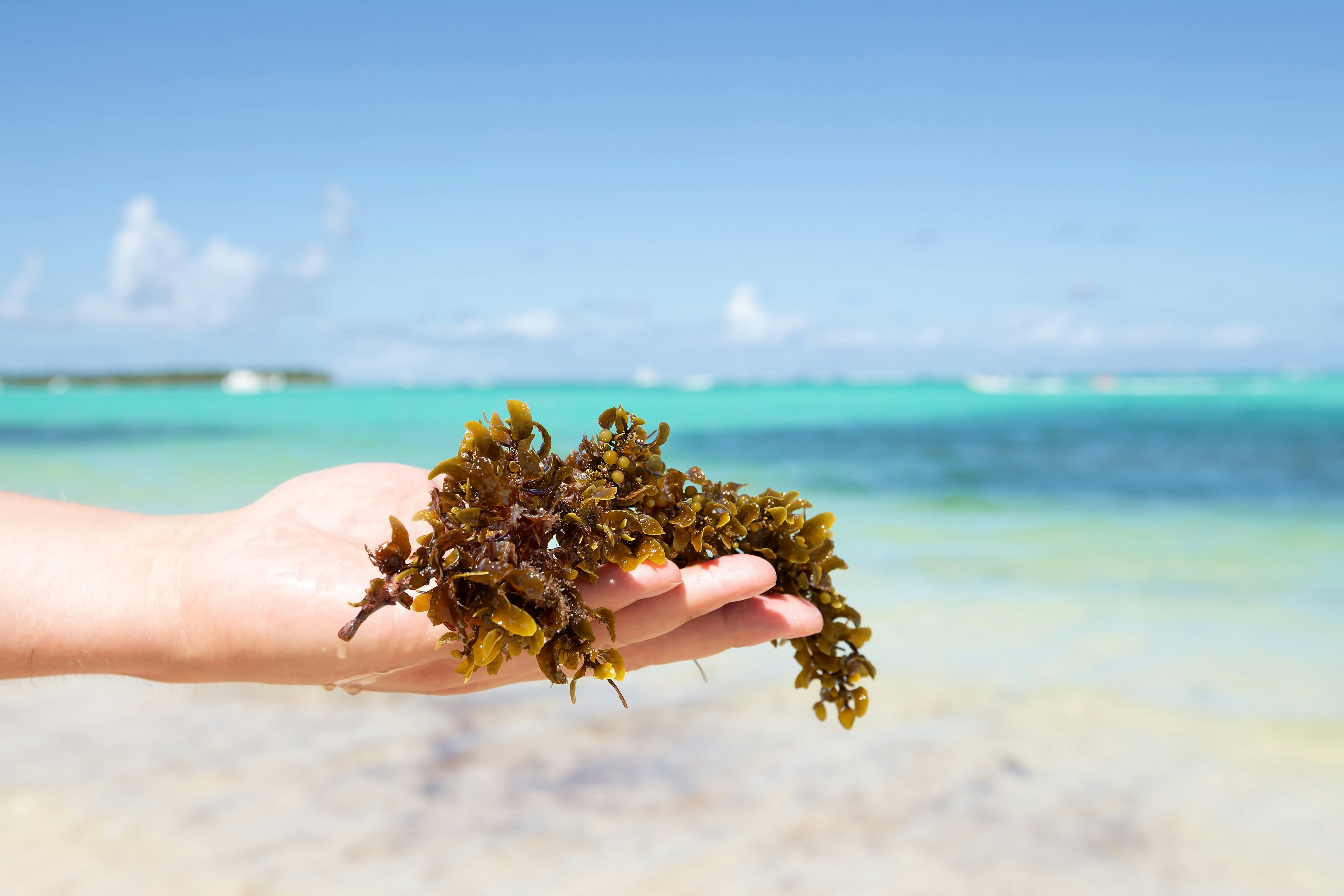
What is sargassum?
It’s really just seaweed. Specifically, a large brown seaweed that bobs around in clumps and patches on the ocean’s surface until it washes up on the shore.
And while it’s a beach day nuisance, sargassum actually plays an important role in the ocean’s ecosystem.
It serves as a habitat and food source for various animals, including fish, turtles, birds, crabs and shrimp. It also serves as a nursery for baby mahi mahi and amberjacks.
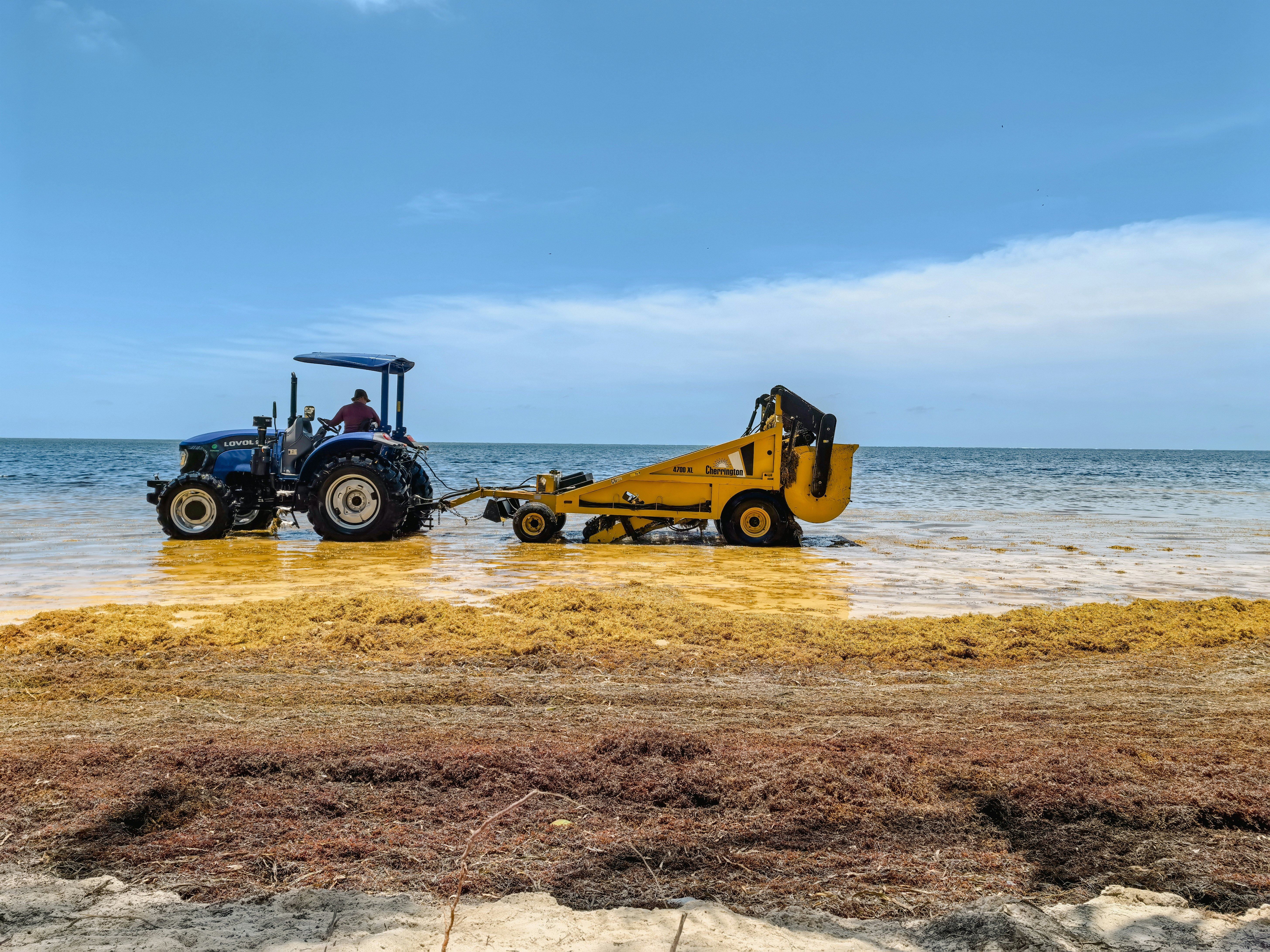
Why are there concerns about it?
The problem is that when sargassum gets to shore, it starts to decompose. And when it decomposes, the decaying vegetation produces hydrogen sulfide and ammonia, creating an odor just like rotten eggs.
This can have a potentially serious impact on the health of vulnerable residents and visitors, especially individuals with asthma or other respiratory conditions.
Marine biologists from Florida Atlantic University found that the masses of decomposing algae contain high levels of vibrio, a highly salt-tolerant bacteria that can potentially cause serious illness in humans.
Ocean pollution has played a role in the spread of vibrio, as the bacteria aggressively seek out and stick to plastic floating in the water.
When did this start, and will it end?
Generally, the influx of sargassum begins to tick up in the spring and reaches its peak during the summer months until finally subsiding in the fall.
But in 2025, nearly 38 million metric tons of sargassum have been observed in the Caribbean, according to a report released by the University of South Florida in May – the largest amount since scientists began studying the Great Atlantic Sargassum Belt in 2011.
Still, you can expect the numbers to substantially decrease throughout October and November.
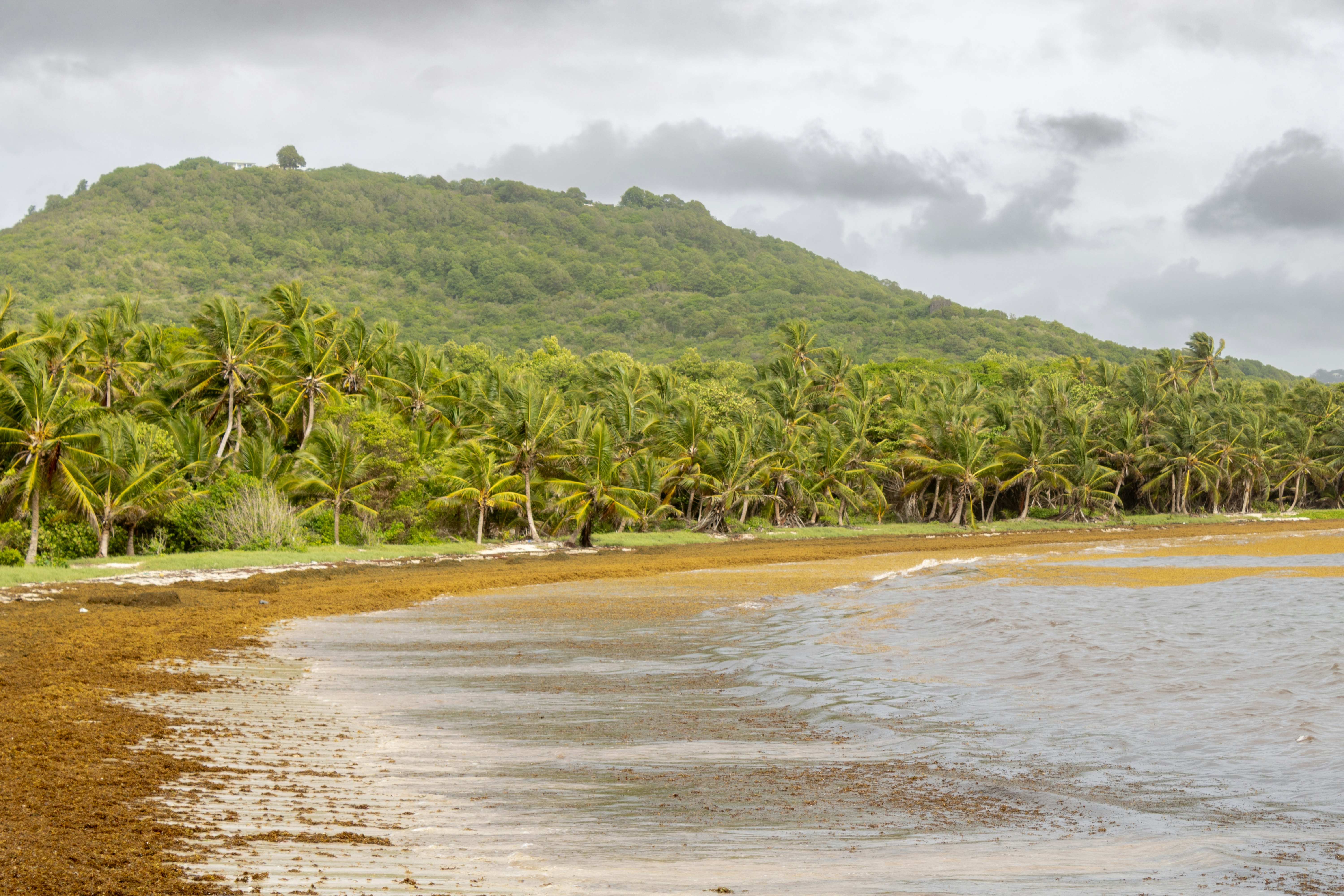
Which destinations have the least (or most) amount of sargassum?
Right now, it appears as if certain areas of Puerto Rico (particularly the southern and eastern coasts like Ceiba), Guyana, Martinique, Anguilla, Barbados, St. Martin and the Mexican Caribbean coastlines are being most affected.
Aruba, Curaçao and the western coasts of Jamaica are reporting fewer issues with sargassum.
If you’re curious about a particular location, you can use the Caricoos sargassum tracker to see how the algae are affecting your destination.
What do I need to know before I go?
There are a few measures you can take to ensure that sargussum doesn’t monopolize your fun in the sun time:
Try to travel outside of the late spring and summer months when sargassum numbers are at their highest.
Pick the west coast destinations on your island of choice – the Great Atlantic Sargassum Belt floats on the east and northeast of the Caribbean, which means the most intense buildup tends to happen on the east, north and south coast beaches.
Consider booking at larger communities and resorts, which will often have the resources and funds to remove sargassum from their shores.
Check webcams of popular beaches or look for Facebook community groups to see what visitors are saying about their experiences if you want to know how much sargassum you can expect at your destination.
What is being done to combat sargassum?
Tackling the sargassum issue in the Caribbean has become a team effort. Governments and organizations are setting up monitoring systems that keep an eye on sargassum blooms, ensuring communities get timely alerts when trouble is brewing.
Local groups and NGOs are stepping up, too, organizing beach cleanups to clear sargassum from the shores, which is crucial for keeping beaches beautiful and tourism thriving.
Scientists are digging into research to understand how sargassum grows and what impacts it has, helping to shape better management plans. Some creative minds are even looking at ways to turn sargassum into something useful, like biofuels or fertilizers.
Public awareness campaigns are also educating folks about sargassum and its effects, so communities can be better prepared.
All these efforts combined aim to lighten the environmental and economic burden that sargassum brings to the region.
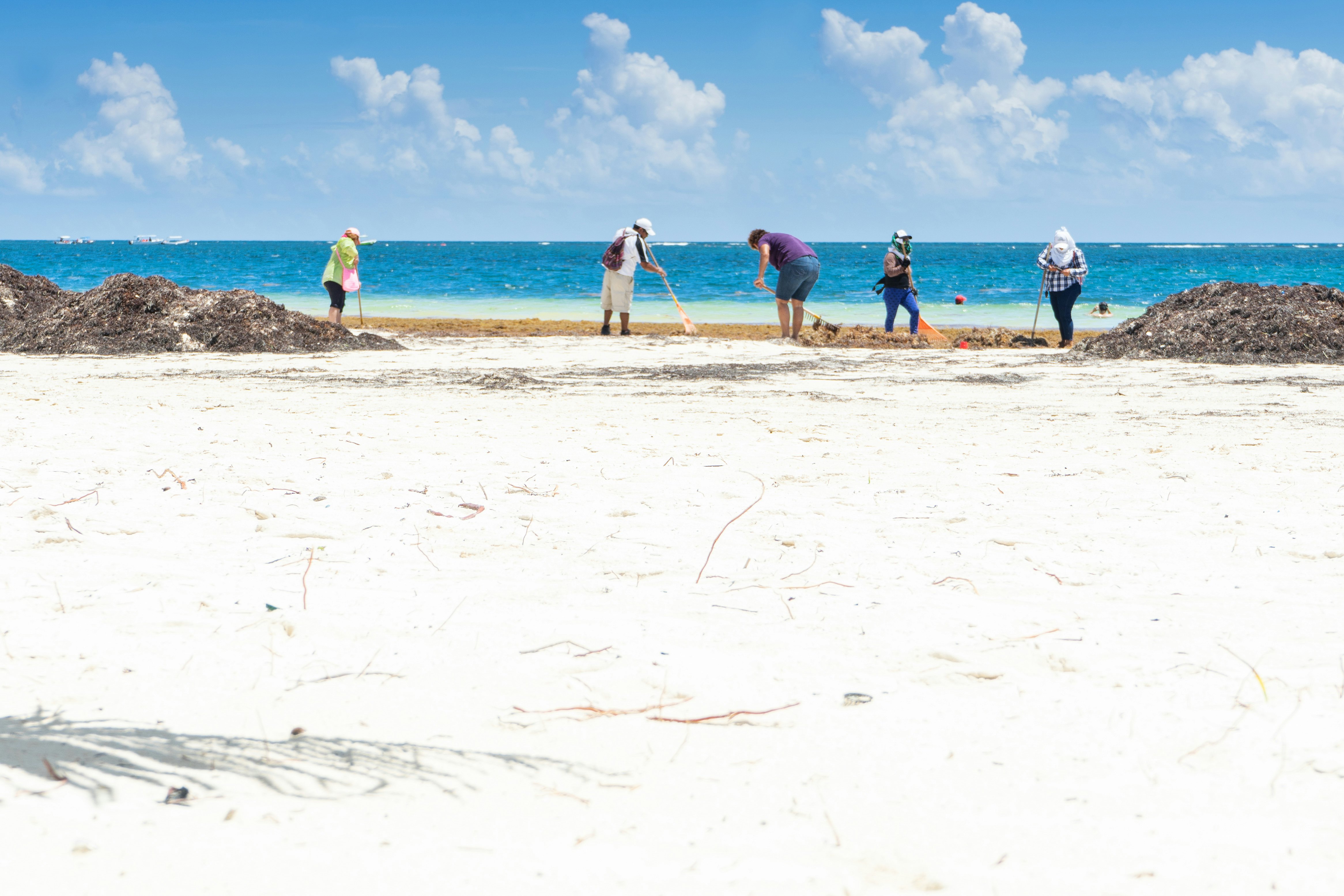
Are there volunteer services for visitors to help with beach cleanup?
Yes! You can find quite a few organizations mobilizing volunteers to help with sargassum cleanup.
Caribbean Cleanup: This organization focuses on sargassum and other pollution affecting Caribbean beaches and marine life. You can join as a volunteer on their site.
Blue Defenders: This group organizes sargassum cleanups in various areas, emphasizing the need for immediate action to protect sensitive ecosystems, such as flamingo breeding grounds, that are affected by sargassum accumulation.
You can also find local initiatives on social media that involve beach cleanups and marine conservation, including some that focus on sargassum removal activities.
How can you enjoy your trip despite the sargassum?
Let’s face it: there will probably be above-average amounts of seaweed on the beach this year. Still, Caribbean beaches are absolutely stunning and offer tons to do during the summer.
Instead of bypassing what’s sure to be an amazing beach vacation, take some smart precautions before you go and prepare to shift plans if necessary:
Try to avoid handling seaweed on the shore or stepping on them barefoot, as the tiny creatures that live in sargassum may irritate your skin.
Make a day trip to a nearby spring or spend an afternoon hiking, canyoning or caving through waterfalls and cenotes. You’ll find no shortage of pools, water parks, splash pads and other bodies of water to help you cool off.






